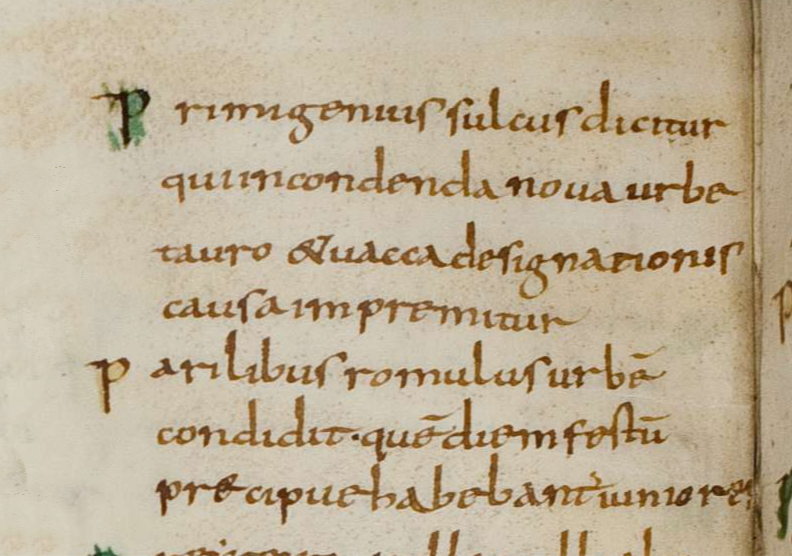Attributing Cappadocian Coins
- sulla80

- Oct 31, 2020
- 3 min read
Updated: Dec 9, 2023
Understanding ancient coins can sometimes get very contentious as those studying the coins disagree. One such battle arose over the coins of Cappadocia. The most useful references for these coins can be found online. There was battle in print between Simonetta and Mørkholm over the sequencing and details of these coins and Mørkholm prevails in the end.
Here's how each described it.
Simonetta (in Typos II, 1977):
Mørkholm has proposed several major modifications from the classification, which appeared unacceptable to me and from which has ensued a lively polemic (perhaps too lively) that has dragged on to the present day.Mørkholm (in his book review, 1979):
"In 1977 Simonetta has restated his case in a book which I have been asked to review. The task is necessary, but not altogether pleasant. Simonetta has hardly moved an inch from his positions of 16 years ago, and I am just as convinced of the strength of my arguments as when I first put them forward. Sixteen years and fifteen papers later nothing has really changed! The utter futility of the situation is overwhelming (see Bibliography below, p. 244)."
Kings of Cappadocia, Ariarathes V Eusebes Philopator, circa 163-130 BC, AR Drachm, dated CY 33 (130 BC)
Obv: Diademed head right
Rev: Athena standing left, holding Nike, spear, and shield; T to outer left, monogram to inner left, Δ to outer right, ΓΛ (date) in exergue
Ref: Simonetta (Ariarathes IV) 15a Simonetta, B. (1961)
The long list of relevant articles available online:
Simonetta, B. (1958). “Sull’ Attribuzione delle Dramme di Ariarathes IV e di Ariarathes V,” RIN 60: pp. 11-20.
Simonetta, B. (1961). Notes on the Coinage of the Cappadocian Kings. The Numismatic Chronicle and Journal of the Royal Numismatic Society, 1, 9-50.
Mørkholm, O. (1962). Some Cappadocian Problems. The Numismatic Chronicle and Journal of the Royal Numismatic Society, 2, 407-411.
B. Simonetta, B (1964). “Remarks on Some Cappadocian Problems.” Numismatic Chronicle, vol 4: 83-92.
Mørkholm, O (1964). Some Cappadocian die-links . Numismatic Chronicle Seventh Series, Vol 4: 21–25, Pl. 1.
Simonetta, B. (1967). “Some Additional Remarks on the Royal Cappadocian Coinage.” Numismatic Chronicle Seventh Series, Vol. 7, pp. 7-12.
Mørkholm, O. (1968) in Essays Robinson The coinages of Ariarathes VIII and Ariarathes IX of Cappadocia, by O.
Mørkholm, O. (1969). The Classification of Cappadocian Coins. The Numismatic Chronicle (1966-), 9, 21-31.
Simonetta, B. (1970), "A proposito di alcune attribuzioni di monete dei re di Cappadocia proposte dal Dr. MØRKHOLM," RIN 72: pp. 45-61.
Simonetta, B. (1974). “Osservazioni su talune emissioni barbariche dei re di Cappadocia,” RIN 76: pp. 95-105.
Mørkholm, O. (1978). The coinages of Ariarathes VI and Ariarathes VII of Cappadocia. SNR 57: 144–163.
Mørkholm, O. (1979). The Cappadocians Again. The Numismatic Chronicle (1966-), 19 (139), 242-246
Typos II Simonetta Coins of Cappadocia Kings can be found relatively inexpensively
In Typos II Simonetta 1977 my coin above is called Ariarathes IV 15a p.24

The mapping from Simonetta to Mørkholm is given in the 1979 article (Mørkholm, O. (1979). The Cappadocians Again with the Mørkholm 1969 article for the original citation)

Regarding the ΓΛ Mørkholm points out that the number of dies could raise a question about ΓΛ as a regnal year (too many coins for one year?):

He speculates that there might be a combination of :
1) a large issue in the last year of reign as Ariarathes V raised an army to aid the Romans against Aristonicus of Pergamon
AND
2) more speculative, a possibility that coins issued during the regency of Nysa (she killed 5/6 male heirs to retain control), she used this date on issues over four or five years 131-127 BC.



Comments